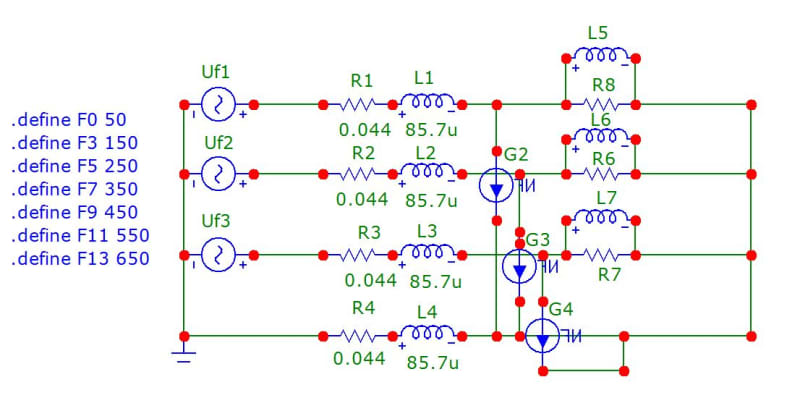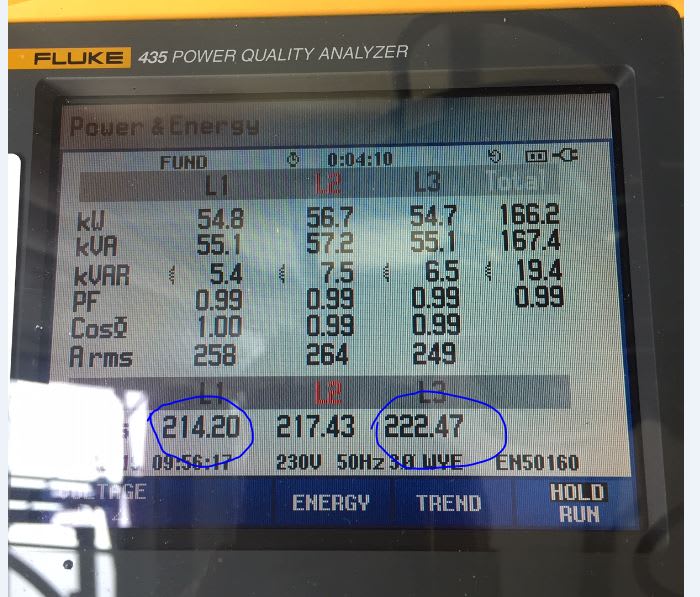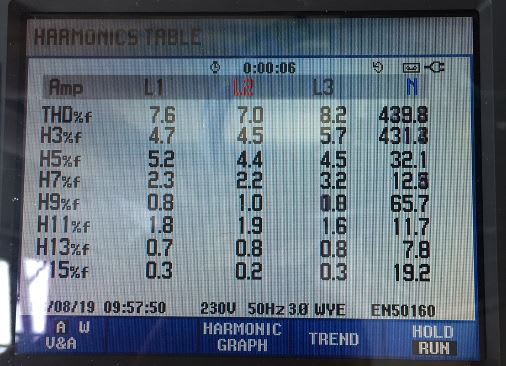


Hello
At a horticulture with a lot of LED growth lamps we have made some measurements. See Fluke pictures below. I am not able to explain why L1 is dropping to 214 V and L3 is 8 V higher and 222 V. The load are approximately the same, 55-56 kW and 6-7 kVAr. Also the harmonics does not vary much from each other in each line.
I have also set up a simulation model with harmonics inserted as sinusoidal current generators corresponding to measured harmonic currents. Loads are represented by R/L in parallel. Cable is (R1,L1...) with 240 mm2 Al, 350 m. Uf1,Uf2,Uf3 (in secondary substation) vary from each other less than 0,5 V and they are all represented by 230 Vrms.
Does anyone have any clues what may seem to be the problem. I a getting quite empty for more ideas. B.R. Hans-Henrik
